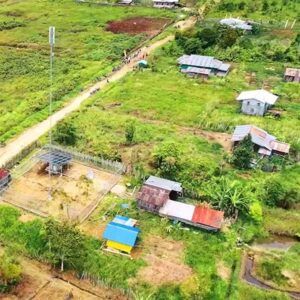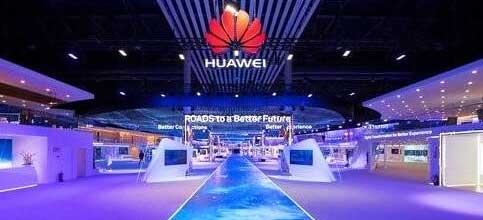
Salt is an essential natural resource for human life that has been exploited by human civilizations around the world since ancient times for consumption and preservation of food, creating of trade routes, influencing economies, promoting creation and development, and even provoking wars. One of the most remarkable salt mines in the world is located in Maras, a large extraction center of pre-Hispanic origin in the Cusco region, the current territory of my native Peru. The mine is located 50 km northeast of the historic capital of the Inca empire, at an altitude of 3,200 meters above sea level.
This salty environment is certainly felt in the air breathed by the half million Cusco residents and the million and a half tourists who visit nearby Machu Picchu each year. This salty air also presented a significant challenge to Huawei’s materials scientists back in 2010 when they were looking for new components for a type of antenna that could resist all types of weather and be used in any situation. The company’s researchers immersed themselves in investigations of different environments and anti-corrosion manufacturing processes.

According to the book “Explorers” by Tian Tao and Yin Zhifeng, Peru’s salty air was merely one of their challenges faced by the intrepid researchers. From the freezing north of Russia and Finland to the heat of Nigeria; from humid Singapore and Malaysia to the dry dust of Egypt and Kuwait; from the equally salty air of Sri Lanka to the sulfurous climate of the oil-producing Arab countries, their challenge seemed unsurmountable. Over the course of following two years, the company’ scientists trekked through more than 30 countries and collected data on over 2,000 base stations. They analyzed dew condensation and depth of snow, air conditioner exhausts, and chemical plant smoke and runoff, to see how each would affect the type and rate of corrosion. They even looked at bird droppings and ant saliva.
Ultimately, the Huawei team released the comprehensive Single Antenna solution, which became the industry’s first beamforming active antenna unit. Fast forward to 2023, and the world is seeing Huawei introduce an upgraded MetaAAU, a new breakthrough in Massive Multiple-Input Multiple-Output (MIMO) coverage, capacity and energy efficiency.

Long inter-site distances have always stood as a challenge to delivering a premium 5G experience. Huawei’s MetaAAU integrates innovative technologies, such as ultra-wideband, multi-channel, and extremely large antenna array (ELAA), in order to significantly improve spectral and energy efficiency. After MetaAAU was deployed, both the download and upload speeds of users increased by around 35%, while the coverage area expanded by about 30%.
The spirit of innovation demonstrated by Huawei’s Antenna Business Unit should surprise no one. It was only in the late 90s when company’s founder Ren Zhengfei was addressing a dozen or so young R&D engineers in the rental apartment that doubled as Huawei’s Shanghai Research Center. By now, the center is housed in one of Asia’s largest single-structure buildings and has more than 10,000 technical experts, engineers, and developers.

The Shanghai Research Center, which was recently visited by Brazil’s president Lula da Silva, is one of the company’s 15 research centers around the world. More than half of Huawei’s 207,000 employees around the world are involved in R&D. Every year, Huawei invests over 10% of its sales revenue into R&D. 2022 was an exceptional year in that regard, as total R&D spending ascended to 25.1% of total revenue. This level of commitment is what produces breakthroughs such as its MetaAAU series, for which the company was awarded GLOMO’s “Best Mobile Network Infrastructure” by GSMA at the Mobile World Congress (MWC) Barcelona 2023.
Huawei has invested heavily in R&D for antennas; the company exhibits a dedicated antenna research and testing team of over 1,000 engineers, and it has filed over 2,000 patents related to antenna technology. Huawei has its own manufacturing facilities for antennas, which gives it the ability to control the quality of its products. Huawei has partnered with a number of major telecom operators, which gives Huawei access to valuable market data and feedback, which helps the company to improve its antenna products. As a result of these factors, Huawei is well-positioned to continue leading the global antenna market.

Huawei actively works to capture voices and feedback from customers and partners through numerous channels. Thanks to this bi-directional communication, the company has developed a rigorous and comprehensive range of testing methods for its antennas, including:
- Radiation testing: This testing is used to test the accuracy and efficiency of the 3D pattern of the antenna and ensure its performance meets the requirements.
- Efficiency testing: This testing is used to measure the antenna’s efficiency and ensure that such efficiency meets the performance standards.
- Environmental testing: This testing is used to simulate the antenna’s operating environment and ensure that it can withstand the most drastic environmental conditions.
- Mechanical testing: This testing is used to measure the antenna’s strength and durability and ensure its long-term reliability in network applications.

Huawei also employs a number of other testing methods, depending on the specific antenna type and application. Antenna technologies play an increasingly important role in network performance improvement, network deployment, and network evolution. As such, these methods are designed to ensure that Huawei’s antennas meet the highest standards of quality and reliability, and help global operators build high-quality and high-performance networks.
Today, Huawei is driving industry development to usher in a new world of 10 Gigabit experiences that will reach 200 billion connections by 2030. Huawei has been working with the global community to explore and define 6G. Based on the expertise acquired working with over 200 operators to deploy 5G networks, Huawei is expected to widen its technological leadership and continue to grow its market share in the coming years.








